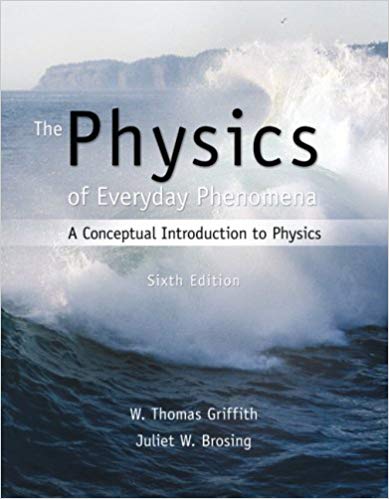Answered step by step
Verified Expert Solution
Question
1 Approved Answer
Scenario 1: The plane is flying at a height of 2200 m with a velocity of 225 miles per hour when it drops the payload.
Scenario 1: The plane is flying at a height of 2200 m with a velocity of 225 miles per hour when it drops the payload. All other aspects of this scenarioremain the same.
Scenario 2: The wind is a tailwind and is blowing at 15 miles per hour. The plane is still flying at 225 miles per hour and the height is still 2200 m. All other aspects of this scenario remain the same.
Scenario 3: The catapult is 45 m below the hill that the payload will land on. The initial velocity is 72 m/sec, and the angle is 53 degrees.
- Construct a diagram that describes the horizontal and vertical motion of the payload. Your diagram should visually represent the initial velocity and height of the payload as it approaches the drop site. To create the diagrams, you may use drawing tools, or you may photograph or screenshot a drawing of your own. This diagram should include the following elements:
- The initial velocity of the payload
- The initial height of the payload
- Horizontal distance to the drop site
- Using your understanding of kinematic equations and the given variables in the scenario, calculate the horizontal and vertical motion of the payload to ensure it arrives at the drop site. In your calculations, account for both the horizontal and vertical motion of the payload. Your calculations should address the following:
- Initial velocity of the payload when launched
- The velocity of the payload when it hits the ground
- Following your calculations, describe the equations used in calculating the vertical and horizontal motion of an object. In your descriptions, address the following:
- What is the relationship between vertical and horizontal motion in kinematics equations?
- How did you analyze the vertical motion of the payload in your solution?
- How did you analyze the horizontal motion of the payload in your solution?
- What other kinematics principles did you consider in analyzing the motion of the payload?
- Following your initial calculations, your supervisor has asked you to consider two additional scenarios. For both scenarios listed below, adapt your diagrams and descriptions to respond to changing variables. Design a diagram describing the horizontal and vertical motion of the payload in order to reach the drop site, and then use your understanding of kinematic equations to describe how these changes would affect calculations for the payload. The two additional scenarios are described below:
- In order to prepare pilots for changes in condition, you have been asked to model supply drops by a plane flying into a headwind. For this scenario, you will choose your own location. Use a resource such as the National Weather Service to select a location. Be sure to name the location and use the wind speed in the area to determine the headwind for the plane. For this scenario, consider the plane's speed and the height above the drop site to be the same as the first scenario: a speed of 225 miles per hour relative to the ground and at a height of 2,200 meters above the target site.
- Due to historical difficulty in delivering supplies by plane, one of your colleagues has suggested you develop a catapult for slinging supplies to affected areas, similar to the electromagnetic lift catapults used to launch planes from aircraft carriers. Using your knowledge of kinematics equations, determine whether this would be sufficient to deliver the payload to the drop site.
- Once you have completed your adjusted diagrams and equations, describe the effects of changing variables on kinematic equations. These descriptions should reflect the different motions and considerations made for the modifications you considered in the previous step. In your descriptions, be sure to address the following:
- How did the changing variables affect the vertical and horizontal motion of the payload?
- What adjustments to delivery would need to be made to account for these changing variables?
Step by Step Solution
There are 3 Steps involved in it
Step: 1

Get Instant Access to Expert-Tailored Solutions
See step-by-step solutions with expert insights and AI powered tools for academic success
Step: 2

Step: 3

Ace Your Homework with AI
Get the answers you need in no time with our AI-driven, step-by-step assistance
Get Started


